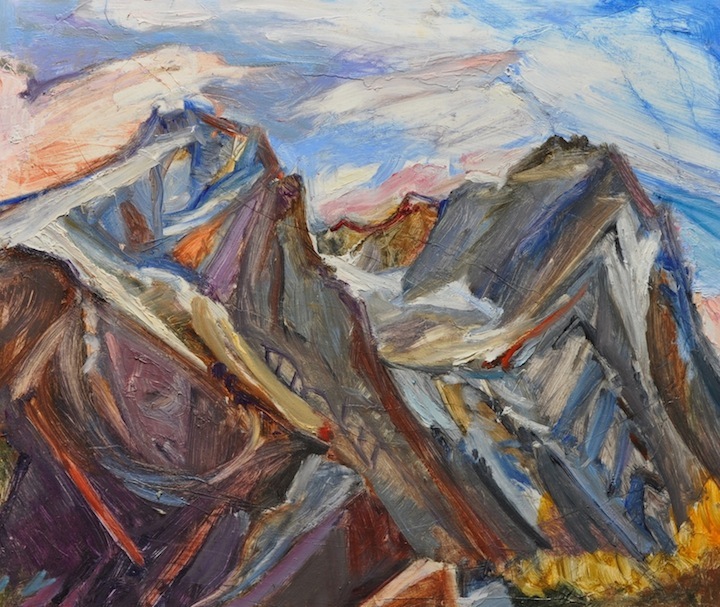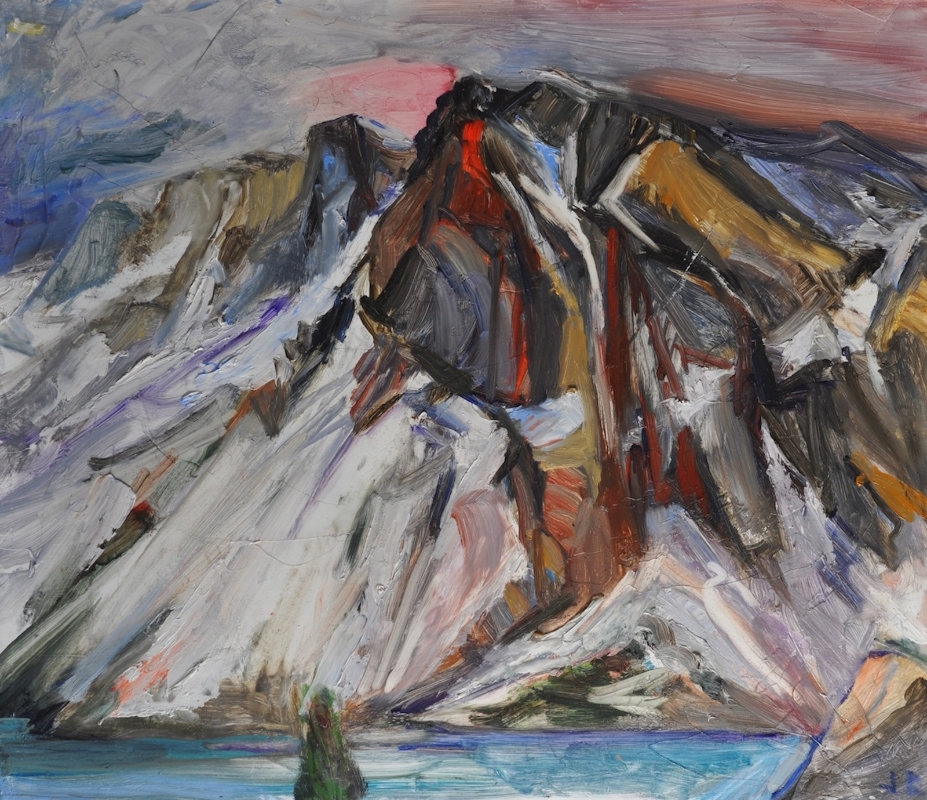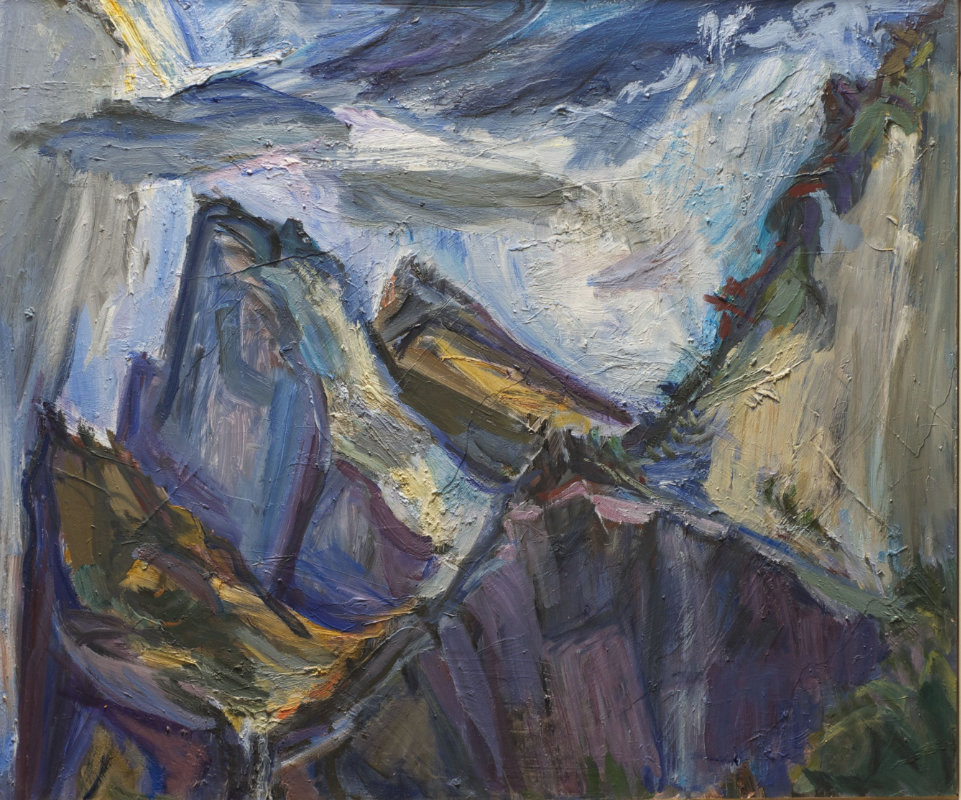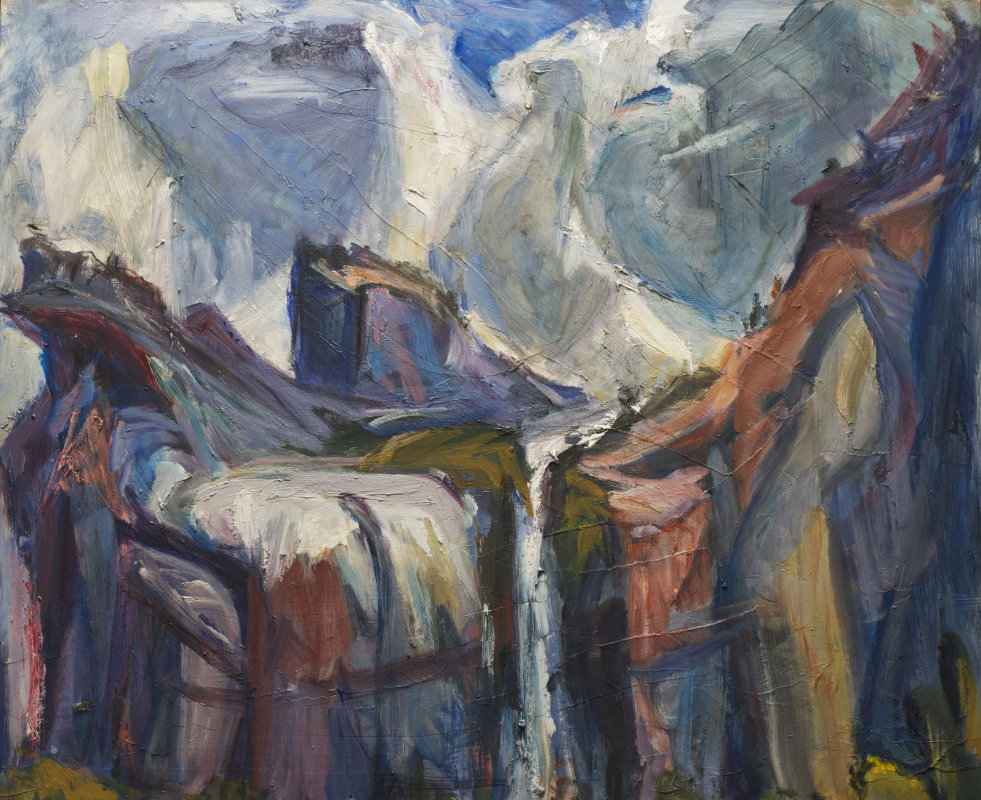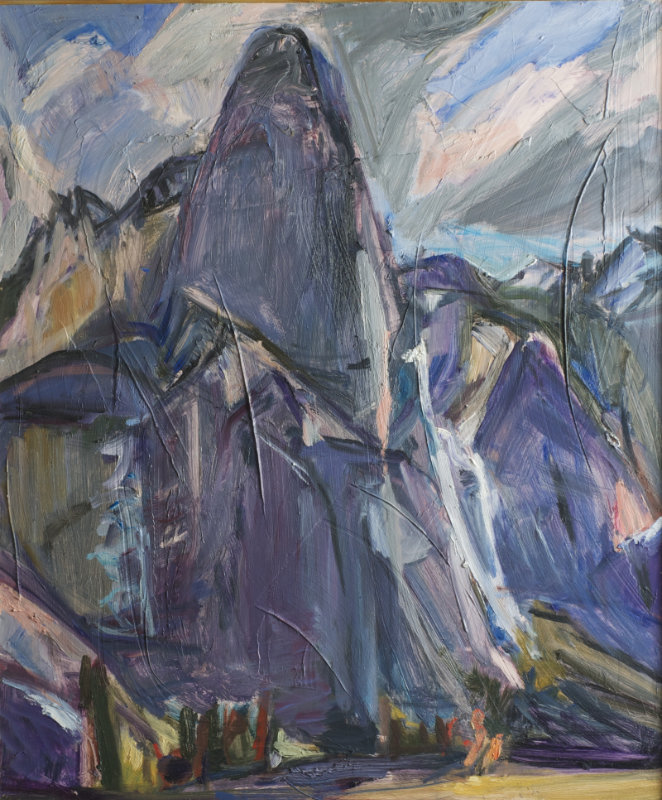Rugged Yet Fragile Land
My on-site landscape paintings are about the physical experience and specificity of the Western terrain, where perception is an active process. The physicality of rising/falling with the weight of gravity and the physical force of light beating down on and lifting up. There is climbing, jumping, and hanging from ledges and edges within the painting as the space cups and forms around me. I am interested in the life and language of Form: how the form talks as it goes into space, how light and distance swallow and selectively magnify the forms, how a rhythmic movement in space releases forms which change direction, split, bulge, fall back into space. Each painting motif embodies a characteristic form, which I hope to catch by tweaking an abstraction. All elements have consequences on other forms and relationships within the whole. Forms that topple like a house of cards with attendant sounds, or balanced ones signaling a tenuous order, calling out but always irregular.
The paintings even mirror the effort of making them. Footsteps are evident throughout the paintings. Packing into the site can be physically exhausting, and painting time is short, controlled by the movement of the sun, wind, and weather. When working outside in the desert southwest with its overpowering winds and relentless sun, I strap my easel to my legs because there are no trees but cactus, low sharp brush, and boulders. When I work a watercolor, it is on the ground with either my knees or my feet holding down the painting -board. When once asked why he did not paint plein-air, Degas replied, “Painting is not an outdoor sport.” But I find it must indeed by necessity resemble one!
Most of the work is done in National Parks where the last remaining wilderness in this country is accessible to the public. Painting has historically played a vital role in interpreting the land there, and I believe it will continue to do so. It is my hope the work conveys the profound elevation of spirit that I experience in these wild places, and that it invokes, as Barry Lopez has said, the Natural Order of the Land “as that irreducible, holy complexity that manifests itself as all things changing through time”.
